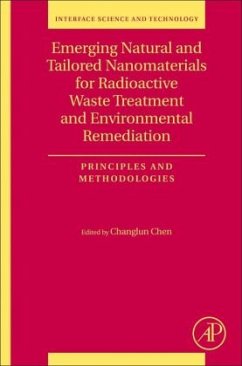
Natural and Engineered Clay Barriers
Versandkostenfrei!
Versandfertig in 6-10 Tagen
127,99 €
inkl. MwSt.

PAYBACK Punkte
64 °P sammeln!
Clays are used as barriers for the isolation of landfills and contaminated sites. They are envisioned as long-term storage media for hazardous materials and radioactive wastes, and as seals in the case of geological CO2 sequestration or energy storage. Clay properties greatly influence the integrity, efficiency, and safety of these applications.Natural and Engineered Clay Barriers provides a clear view of the fundamental properties of clay materials and how these properties affect their engineering applications. This volume focuses on how the mass transfer properties (hydraulic permeability, g...
Clays are used as barriers for the isolation of landfills and contaminated sites. They are envisioned as long-term storage media for hazardous materials and radioactive wastes, and as seals in the case of geological CO2 sequestration or energy storage. Clay properties greatly influence the integrity, efficiency, and safety of these applications.
Natural and Engineered Clay Barriers provides a clear view of the fundamental properties of clay materials and how these properties affect their engineering applications. This volume focuses on how the mass transfer properties (hydraulic permeability, gas fluxes, molecular diffusion, semi-permeable membrane properties), geochemical reactivity (adsorption, dissolution) and mechanical properties of clay barriers at the macroscale are influenced by phenomena that occur at clay mineral - water interfaces.
Natural and Engineered Clay Barriers provides a clear view of the fundamental properties of clay materials and how these properties affect their engineering applications. This volume focuses on how the mass transfer properties (hydraulic permeability, gas fluxes, molecular diffusion, semi-permeable membrane properties), geochemical reactivity (adsorption, dissolution) and mechanical properties of clay barriers at the macroscale are influenced by phenomena that occur at clay mineral - water interfaces.












